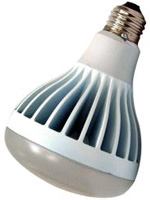Touchy About Faucets
Published 13 years, 9 months pastAs part of last year’s renovation, we redid our kitchen, which means a new sink and faucet. We traded up from an overmount single-bowl sink to an undermount double-bowl sink, both aspects of which we’d long wanted.
There was one thing we had to fight a bit to get, though, which was a garbage disposal for each sink bowl. The plumber didn’t want to do it on ground of it adding weight to the sink. Our response was, in effect: “We’ll have the sink remounted in ten years if necessary, but put in two disposals.” So he did, and we’re really glad.


The replacement faucet, however, does not make us nearly as glad. We decided to get a touch-activated faucet, settling on a Delta Addison single-handle faucet. The touch activation was because many are the times we want to wash off hands that have just handled raw meat, and being able to touch-on the faucet with a forearm seemed like a great idea — and it is! The problem is that nearly the entire faucet body, including the temperature/flow adjustment handle, is touch-sensitive. The exception is the pull-out head, which is inert.
Thus, if you reach past the faucet and brush it by mistake, the water starts flowing. This is true even if you bump the base of the faucet, which is annoying when you’re trying to wipe down the countertop around the faucet. Even worse, changing the temperature or flow rate means using the touch-sensitive handle. There’s evidently logic built into the faucet that’s meant to prevent the water from cutting off if you adjust the handle, but it only works about half the time. So sometimes you make an adjustment and the flow cuts off, and sometimes it doesn’t.
Frankly, the inconsistency is more maddening than the unwanted cutoffs. For example, I’ve developed an expectation that the flow will cut off after I use the handle. So I’ll adjust and then immediately tap the faucet again so it cuts off and then comes back on tap. Except if it didn’t cut off, then my tap cuts it off before I can stop the impulse and then I have to tap again.
Of course, any touch-sensitive faucet is a total luxury, and fortunately it’s easy to disable the touch feature — all we have to do is pull the batteries from the battery pack and it becomes a regular faucet. The drawback there is that there are definitely times when you want to be able to turn on the water flow without smearing whatever’s all over your hands on the faucet. (And with three kids, one of which is an infant, there are some things you definitely want to avoid smearing.)
The really incredible part is that these problems would be completely solved if only the neck of the faucet were touch-sensitive. If the base, which is a separate part from the neck, and the adjustment handle were inert, easily 90% of our frustration would just vanish. We could start the water flow by touching the neck and not worry about weirdness with the adjustment handle or when brushing the base.
If you’re thinking of installing a touch-sensitive faucet, I can’t recommend this one, unless of course a future version of it fixes the problems plaguing this one. And I have no idea if there’s a better touch faucet on the market; for all I know, they’re all like this. Definitely do your homework, and if at all possible play with a functioning model before taking the plunge. The touch feature doesn’t add a ton to the price of the base faucet, but it’s enough to be annoying when you’re seriously considering disabling it.
 The Web Ahead
The Web Ahead 